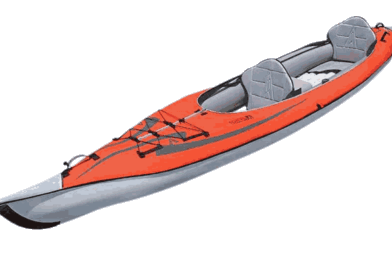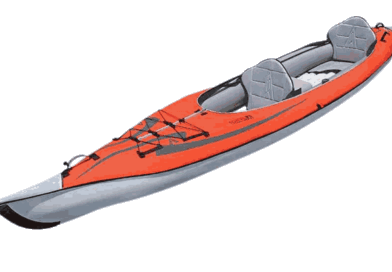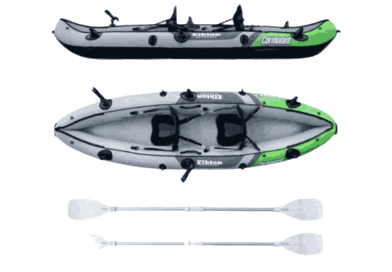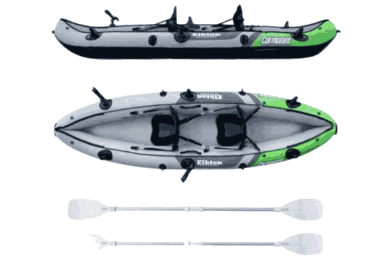What Did Kayak Originally Mean? – All You Need to Know
Kayaking From Eskimo Origins to Modern Fun - All Your Questions Answered!
Dear readers, have you ever wondered where the word “kayak” came from? Or what it originally meant? Are you curious about this fascinating watercraft’s different meanings and symbolism?
In this article, we’ll dive into the history and evolution of the kayak, examining its roots as a borrowed word and its original purpose as a hunting vessel.
We’ll explore the various meanings of the kayak, from its practical use as a means of transportation to its symbolic significance as a representation of cultural identity and connection to nature.
But that’s not all – we’ll also take a closer look at the kayaking sport and what it’s known for, as well as explain the concept of rolling a kayak. And for those of you wondering about the correct spelling and meaning of kayak, we’ve got you covered too!
So, whether you’re a seasoned kayaker or simply curious about this unique watercraft, join us as we uncover the most important queries on the topic. You won’t want to miss it!
Table of Contents
Is kayak a borrowed word?
Kayak means “man’s boat” in Greenlandic (qajaq). It was invented by Arctic natives (Inuit, Yupik, Aleut) who used animal skins and bones to make agile boats for hunting and traveling. Kayaks are over 4,000 years old and still popular today.
Did you know that the word “kayak”may not actually be English? It is believed to come from the Inuit language. But what did it originally mean? The answer may surprise you and shed light on the fascinating history of this iconic watercraft. Keep reading to find out!
What did kayak originally mean?
Kayak is an Inuit word that means “hunter’s boat” or “boat of the man.” The Inuit are the indigenous people of Greenland and other Arctic regions, who used kayaks made of animal skins over wooden or whalebone frames.
Kayaks were essential for their survival, as they allowed them to travel, hunt, and fish on the water. Kayaks are still part of Inuit culture and heritage today.
Kayak, originally meaning “hunter’s boat”, has evolved to have multiple meanings. Interested in learning more? Read on to discover two of the many definitions of this versatile vessel.
What are 2 meanings of kayak?
Kayak can refer to a small, narrow boat traditionally used by indigenous peoples for hunting and transportation on water, or it can also refer to the modern recreational activity of paddling a kayak for fun and exercise.
Did you know that there is another meaning of kayak that is closely related to question 2? Keep reading to find out!
What is the same meaning of kayak?
A kayak is a type of canoe that is light and paddled. It is similar to other small boats, such as coracles and dugouts.
However, there is one meaning of kayak that is common to all its uses. Beyond its literal meaning, kayak can also have a symbolic or metaphorical meaning.
But did you know that the kayak also symbolizes resilience and adaptability? Discover the deeper meaning behind this iconic vessel and how it relates to human nature.
What does the kayak symbolize?
The kayak is a symbol of freedom for Teresa. It’s like a magical boat that takes her away from her parents, her sister, and the everyday worries of being a teenager.
When she’s in the kayak, she feels brave and strong. She loves the excitement of being out on the water, away from all her worries.
But what makes the kayak truly special? Read on to find out.
What is kayak known for?
Kayaks are small boats that are known for their superior design. They are light, sturdy, and easy to turn. They can be used in calm lakes, rapid-filled rivers, and choppy seas.
The design of the kayak was created by Arctic natives and has been adapted over time. It is a great watercraft for people who want to explore different types of waterways.
Did you know understanding how to roll a kayak is essential for any kayaker looking to explore challenging waters? Hat a crucial skill in kayaking is being able to roll the kayak back up if it flips over. Keep reading to learn more about this important technique.
What does roll a kayak mean?
Rolling a kayak is a special skill that helps you stay safe in your kayak. It means that if your kayak flips over, or capsizes, you can use your body and/or paddle to roll it back upright again. It takes practice, but it’s an important skill to know!
Finally, let’s review the spelling and meaning of kayak.
What is the spelling of kayak and its meaning? The answer may surprise you and will leave you eager to learn more about this exciting water sport.
What is the spelling of kayak and meaning?
Kayak is spelled K-A-Y-A-K. It’s a type of boat that looks like a canoe and was first used by the Inuit people. It has a light frame and a watertight cover with a small opening on top for a person to sit in.
Frequently Asked Questions
What is the origin of the word 'kayak' and how did it come to be used in modern English?
The word ‘kayak’ comes from the Inuit language and originally referred to a small hunting boat made of seal skin stretched over a wooden frame.
It was brought into modern English through early contact between European explorers and indigenous peoples in North America.
What are some common uses for kayaks, both historically and in modern times?
Historically, kayaks were used by indigenous peoples for hunting and transportation in Arctic regions. In modern times, kayaks are used for a variety of recreational activities such as touring, whitewater paddling, and fishing.
How does the design of a kayak differ from other types of small watercraft?
Kayaks are typically longer and narrower than other small watercraft, with a pointed bow and stern. They are designed to be maneuverable and efficient in a variety of water conditions.
What skills are necessary for kayaking, and how can beginners learn to kayak safely?
Necessary skills for kayaking include basic paddling technique, knowledge of water safety and navigation, and understanding how to read water conditions. Beginners can learn from experienced paddlers or take lessons from a certified instructor.
How has the popularity of kayaking changed over time, and what factors have contributed to this trend?
The popularity of kayaking has grown in recent decades, driven by increased interest in outdoor recreation and adventure sports.
Factors contributing to this trend include improved access to equipment and waterways, as well as increased awareness of the health benefits of outdoor activity.
What Can you do now?
Now that you have learned about the history and meaning of the kayak, it’s time to experience it for yourself! Check out our own experience product review for the best kayaks on the market, and read reviews from other kayaking enthusiasts to find the perfect one for you.
Now that we have a better understanding of the origin and symbolism of the kayak, let’s delve into the science behind this fascinating watercraft. In the next article, we’ll explore the physics behind what keeps a kayak afloat, the forces acting on it, and what causes it to flip.
Get ready to dive into the world of kayaking physics!




